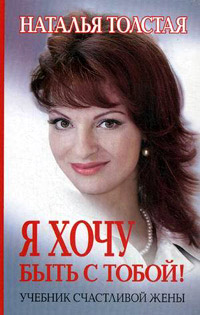Книга Зрелый возраст. Руководство для новичков. 9 шагов к активной и счастливой жизни - Дэвид Олтер
Шрифт:
Интервал:
Закладка:
188. P. Bailey and J. Henry, “Growing Less Empathic with Age: Disinhibition of the Self-Perspective,” Journal of Gerontology 63B, no. 4 (2008): 19-26.
189. G. Labouvie-Vief et al., “Dynamic Emotion-Cognition Interactions in Development: Arousal, Stress, and the Processing of Affect,” in Aging and Cognition, ed. H.B. Bosworth and C. Hertzog (Washington, DC: American Psychological Association, 2009).
190. W. Cannon, “The James-Lange Theory of Emotions: A Critical Examination and an Alternative Theory,” The American Journal of Psychology 39 (1927): 106-24.
191. G. Rizzolatti et al., “Functional Organization of Inferior Area 6 in the Macaque Monkey: Area 5 and the Control of Distal Movements,” Experimental Brain Research 71 (1998): 491-507.
192. V. Gallese and A. Goldman, “Mirror Neurons and the Stimulation Theory of Mind-Reading,” Trends in Cognitive Sciences 2 (1998): 493-501.
193. T. Insel and L. Young, “The Neurobiology of Attachment,” Nature Reviews: Neuroscience 2 (2001): 129-36.
194. A. Schore, “Effects of a Secure Attachment Relationship on Right Brain Development, Affect Regulation and Infant Mental Health,” Infant Mental Health Journal 1-2 (2001): 7-66.
195. A. Schore, “Attachment and Regulation of the Right Brain,” Attachment and Human Development 2, no. 1 (2000): 23-47.
196. A. Schore, “Paradigm Shift: The Right Brain and the Relational Unconscious,” American Psychological Association, invited speaker, lecture conducted for Plenary Session at the American Psychological Association Annual Convention, Toronto, Canada, Aug. 8,2009.
197. A. Schore, “Effects of a Secure Attachment Relationship.”
198. A. Schore, “Attachment and Regulation of the Right Brain.”
199. A. Schore, “Paradigm Shift.”
200. W.A. Collins and L.A. Sroufe, “Capacity for Intimate Relationships: A Developmental Construction,” in W. Furman, B.B. Brown, and C. Feiring, eds., The Development of Romantic Relationships in Adolescence (New York: Cambridge University Press, 1999).
201. М. Solomon, “Emotion in Romantic Partners: Intimacy Found, Intimacy Lost, Intimacy Reclaimed,” in D. Fosha, D, Siegel, and M. Solomon, eds., The Healing Power of Emotion: Affective Neuroscience, Development and Clinical Practice (New York: W.W. Norton, 2009).
202. M. Lucas, Rewire Your Brain for Love: Creating Vibrant Relationships Using the Science of Mindfulness (Carlsbad, CA: Hay House Publishing, 2012).
203. J. Sze et al., “Greater Emotional Empathy and Prosocial Behavior in Late Life," Emotion 12, no. 5 (2012): 1129-40.
204. R. Levenson, “Emotion and Emotion Regulation," in Changing Emotions, ed. D. Hermans, B. Rime, and B. Mesquita (New York: Psychology Press, 2013), 105-12.
205. G. Labouvie-Vief, Psyche and Eros: Mind and Gender in The Life Course (New York: Cambridge University Press, 1995).
206. B. Kok et al., “How Positive Emotions Build Physical Health: Perceived Positive Social Connections Account for Upward Spiral between Positive Emotions and Vagal Tone,” Psychological Science 24, no. 7 (2013): 1123-32.
207. C.D. Batson et al., eds., “Empathy and Altruism,” Oxford Handbook of Positive Psychology, 2nd ed. (New York: Oxford University Press, 2009).
208. B. Schwartz, Rippling: How Social Entrepreneurs Spread Innovation throughout the World (New York: John Wiley & Sons, 2012).
209. T. Hacker, “Building Empathy Builds Society,” The Seattle Times, Jan. 28, 2013.
210. J. Eakin, Living Autobiographically: How We Create Identity in Narrative (Ithaca: Cornell University Press, 2008).
211. P. Eriksson and L. Wallin, “Functional Consequences of Stress-Related Suppression of Adult Hippocampal Neurogenesis: A Novel Hypothesis on the Neurobiology of Burnout,” Acta Neurologica Scandinavia 110, no. 5 (2004): 275-80.
212. J.D. Bremner, Does Stress Damage the Brain? (New York: W.W. Norton & Co.,
2002).
213. M. Crockett et al., “Serotonin Selectively Influences Moral Judgment and Behavior through Effects on Harm Aversion," Proceedings of The National Academy of Sciences 107, no. 40 (2010), retrieved May 19, 2014, doi:10.1073/ pnas.1009396107.
214. J.T. Cacioppo et al., “Social Neuroscience: Progress and Implications for Mental Health,” Perspectives on Psychological Science 2, no. 2 (2007): 99-123.
215. C. Yamal and X. Qian, “Older-Adult playfulness: An Innovative Construct and Measurement for Healthy Aging Research,” American Journal of Play 4, no. 1 (2011): 52-78.
216. E.Y. Cornwell and L.J. Waite, “Social Disconnectedness, Perceived Isolation, and Health among Older Adults,'"Journal of Health and Social Behavior 50, no. 1 (2009): 31-48.
217. T. Schmid, Promoting Health through Creativity: For Professionals in Health, Arts and Education (London, England: Whurr Publishers Ltd., 2005).
11. Мозг и потребность в общении: шаг восьмой
218. С. Pasquaretta et al., “Social Networks in Primates: Smart and Tolerant Species Have More Efficient Networks,” Scientific Reports 4, Article number 7600 (Dec. 2014), doi:10.1038/srep07600.
219. К. M. Kendrick, “The Neurobiology of Social Bonds,"Journal of Neuroendocrinology 16. no. 12 (Dec 2004): 1007-8.
220. P.L. Wachtel, Relational Therapy and the Practice of Psychotherapy (New York: Guilford Publishing, 2008).
221. L. Cozolino, The Neuroscience of Human Relationships: Attachment and the Developing Social Brain (New York: W.W. Norton, 2006).
222. D. Wallin, Attachment in Psychotherapy (New York: Guilford Publishing, 2007), 101.
223. L.M. Matire and M.M. Franks, “The Role of Social Networks in Adult Health: Introduction to the Special Issue,” Health Psychology 33, no. 6 (2014), 501-4.
224. J.K. Kiecolt-Glaser and T.L. Newton, “Marriage and Health: His and Hers.” Psychological Bulletin 127 (2001): 472-503.
225. M.M. Franks et al., “I Will If You Will: Similarity in Health Behavior Change of Married Partners,” Health Education and Behavior 39 (2012): 324-31.
226. R.S. Sneed, and S. Cohen, “Negative Social Interactions and Incident Hypertension among Older Adults," Health Psychology 33 (2014): 554-65.
227. S.T. Cheng et al., “Physical and Social Activities Mediate the Associations between Social Network Types and Ventilator Function in Chinese Older Adults,” Health Psychology 33 (2014): 524-34.
228. J. Hollis, The Eden Project: In Search of the Magical Other (Toronto: Inner City Books, 1998), 13.

























